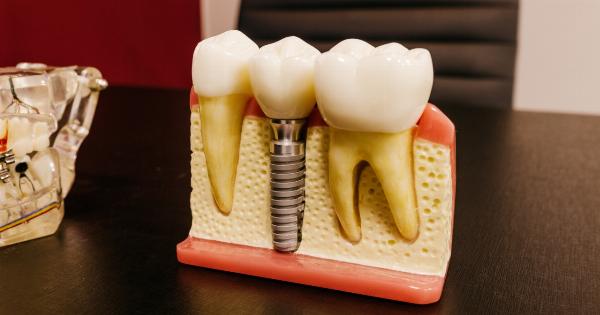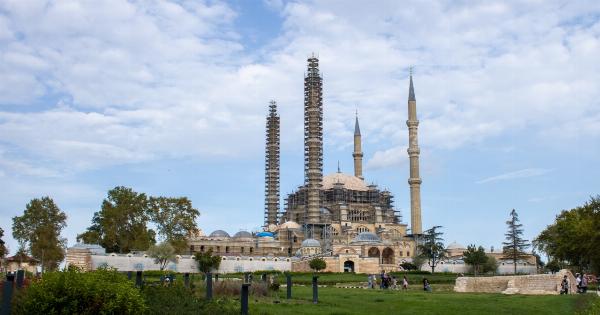Gum disease and tooth loss are common dental problems that affect millions of people worldwide. Traditional treatments for these conditions often involve invasive procedures, such as gum grafting and dental implants.
However, recent advancements in regenerative medicine have opened up new possibilities for restoring damaged gums and replacing missing teeth. This article explores the emerging field of regenerative dentistry and how it offers a promising alternative to conventional approaches.
The Basics of Regenerative Dentistry
Regenerative dentistry focuses on stimulating the body’s natural healing mechanisms to repair and regenerate damaged oral tissues.
It involves using advanced biomaterials and techniques to promote tissue regrowth, including gum tissue, bone, and even dental pulp. By harnessing the body’s innate ability to regenerate, regenerative dentistry offers a more holistic and sustainable approach to addressing oral health issues.
Gum Regeneration: A Game Changer
Gum disease, also known as periodontal disease, is a common condition characterized by inflammation and infection of the gums. If left untreated, it can progress to more severe stages, leading to gum recession and even tooth loss.
Traditional treatments for advanced gum disease often involve invasive procedures, such as gum grafting, which require harvesting gum tissue from another area of the mouth. However, regenerative techniques offer a more efficient and less invasive solution.
Platelet-Rich Plasma (PRP) Therapy
Platelet-rich plasma therapy is a form of regenerative dentistry that utilizes the patient’s own blood to stimulate gum tissue regeneration.
During the procedure, a small amount of blood is drawn from the patient and processed to isolate platelet-rich plasma, which is rich in growth factors and other regenerative components. The platelet-rich plasma is then applied to the affected gums, promoting the growth of new blood vessels and tissue repair.
Growth Factors and Stem Cells
Another exciting approach in regenerative dentistry involves the use of growth factors and stem cells. Growth factors are naturally occurring proteins that play a crucial role in tissue repair and regeneration.
By introducing specific growth factors into damaged gum tissue, dentists can enhance the body’s healing response and accelerate gum regeneration.
Stem cells, on the other hand, are undifferentiated cells capable of transforming into different cell types. Stem cell therapy in regenerative dentistry holds immense potential for rebuilding damaged teeth and gums.
While research in this area is still ongoing, initial studies have shown promising results in stimulating both hard and soft tissue regeneration.
Bone Regeneration: The Foundation of Dental Health
Healthy bone structure is essential for supporting natural teeth and dental implants. Unfortunately, conditions such as periodontal disease and tooth loss can lead to bone resorption and compromise the stability of the remaining teeth.
Regenerative dentistry offers innovative techniques to promote bone regrowth and restore the integrity of the jawbone.
Socket Preservation and Bone Grafting
After tooth extraction, a common regenerative procedure called socket preservation can be performed. This procedure involves filling the extracted tooth socket with bone grafting materials to prevent bone loss and preserve the natural bone contours.
Over time, the graft material stimulates new bone formation, creating a solid foundation for future dental restorations.
Guided Bone Regeneration (GBR)
Guided bone regeneration is a technique used to regenerate bone in areas of severe bone loss or significant defects.
It involves using biocompatible membranes to separate the gum tissue from the underlying bone, creating a protected space for new bone growth. By preventing the invasion of soft tissue, GBR allows the bone to regenerate naturally and ultimately restore its original volume and structure.
Dental Pulp Regeneration: A Paradigm Shift
Traditionally, when the dental pulp (the soft tissue inside the tooth) becomes infected or damaged, root canal treatment or tooth extraction has been the only available options.
However, regenerative dentistry presents a potential paradigm shift by offering new techniques to regenerate dental pulp and preserve the natural tooth.
Regenerative Endodontics
Regenerative endodontics aims to restore the health of the dental pulp and promote root development in immature teeth with infected or damaged pulp.
The procedure involves disinfecting the root canal system and introducing a bioactive material, such as stem cells or growth factors, to stimulate the regeneration of pulp tissue and the formation of a healthy dental root.
The Future of Regenerative Dentistry
The field of regenerative dentistry is still in its early stages, but the potential it holds for transforming dental treatments is immense.
With ongoing research and advancements in techniques and materials, regenerative dentistry is likely to revolutionize the way we approach oral health problems. By leveraging the body’s own regenerative capabilities, this innovative approach offers patients more effective, minimally invasive, and long-lasting solutions for gum and tooth restoration.



























